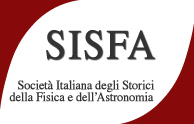Speaker
Description
Starting in 1881, Giovanni Virginio Schiaparelli dedicated himself to the observation of the planet Mercury. Contradicting the results of previous astronomers, who had assigned Mercury a rotation period similar to that of the Earth, Schiaparelli came to the conclusion that the planet's rotation period coincided with the period of its revolution around the Sun; in other words, Schiaparelli became convinced that the planet Mercury was in synchronous rotation, as the Moon is with respect to the Earth. Today we know that this conclusion is incorrect, but Schiaparelli's error persisted for decades, being definitively disproven only in the mid-twentieth century thanks to new observational techniques. In this contribution, we will consider the explanations offered by scholarly literature regarding what might have misled Schiaparelli. While some authors tend to emphasize the difficulties inherent in the observation itself, others stress different, extrinsic factors (for example the fact that Schiaparelli entertained the idea that Mercury could have an atmsophere, and perhaps even living beings dwelling on its surface). Furthermore, an attempt will be made to compare the drawings from Schiaparelli's diaries, preserved in the Historical Archives of the Brera Astronomical Observatory, with the maps obtained in recent years by probes.

